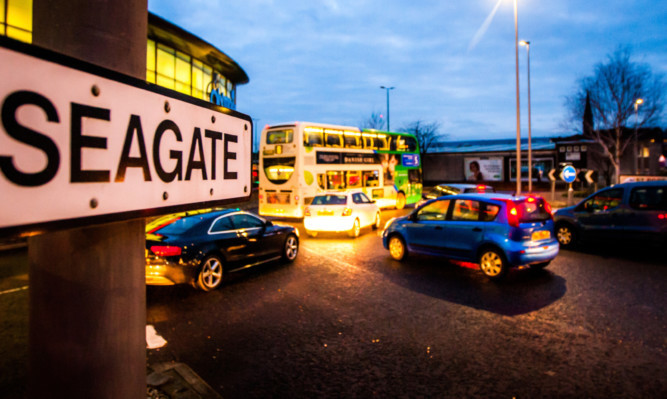Dundee’s air quality standards remain “scary” despite efforts made to reduce carbon emissions, the city’s Labour group has said.
Significant progress has been made, with carbon emissions falling by nearly 15% between 2005 and 2013.
Nonetheless, it can still lay claim to two of Scotland most polluted streets, with the Seagate and Lochee Road both breaching legal limits on nitrogen dioxide.
That has seen Labour environment spokesman Richard McCready call for a new city-wide approach to the problem.
He told The Courier that for the sake of public health it was vital that the council be joined in its efforts to clean up Dundee by hauliers, bus firms, businesses and the public.
Dundee City Council has been challenged to reduce carbon emissions by a testing 40% by 2030 and must also take steps to make the city more resilient to the impact of climate change.
That means the city must achieve a further reduction of around 25% over the next 15 years.
Earlier this month the council agreed to develop a Sustainable Energy and Climate Change Plan (SEAP) for Dundee.
One of its key aims will be to reduce carbon emissions across the city.
Mr McCready said he had been looking for improvements in air quality for “a number of years” and believes more can and must be done.
“There are real issues that are impacting upon the health of people who live on Lochee Road and who walk in the Seagate,” he said.
“Time after time these streets are said to be among the most polluted in the city and if the Friends of the Earth figures are anywhere near accurate then it is scary.
“We need big bus firms and hauliers to take action, we need the people of Dundee to help and we need to listen to what organisations such as Friends of the Earth and the British Heart Foundation have to say on air quality.
“There is also a need for a concerted effort by a range of agencies including the council, Scottish Government and Transport Scotland.
“I know that the council has helped to make improvements but we need to get to the point where this problem has been dealt with. It is serious.”
Dundee’s SEAP is likely to take shape over the next two years and will detail a variety of initiatives through which reductions in carbon emissions can be met.
Organising the city’s efforts in such a manner should enable officials to benefit from a number of EU funding schemes.
It is hoped that in addition to improving air quality, the effort will result in lower energy costs, social, economic and health benefits and tackle fuel poverty.
